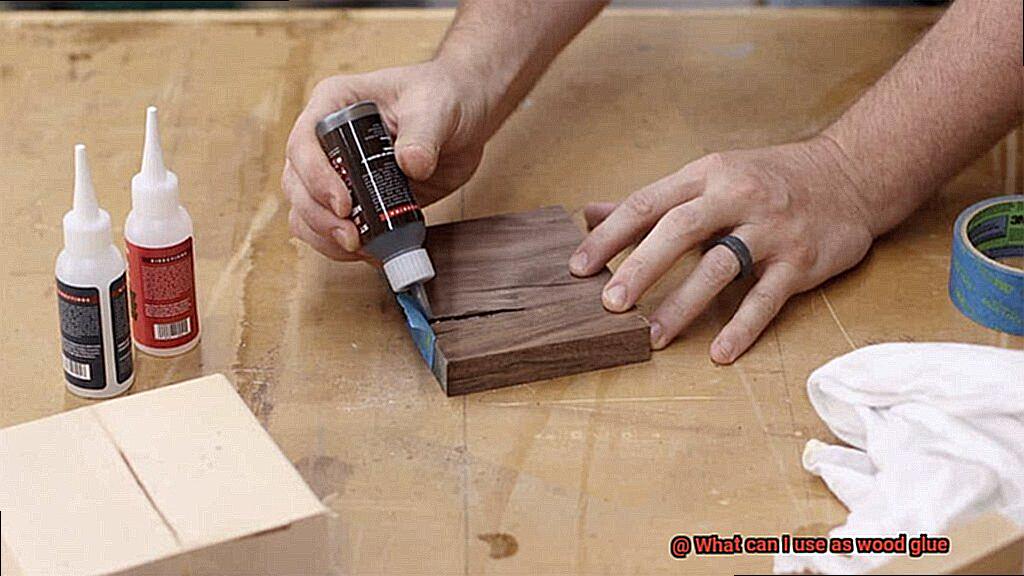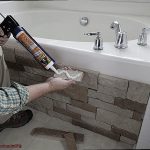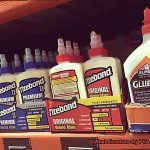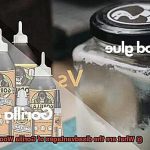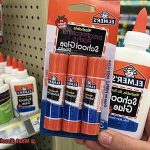Are you tired of struggling to remove epoxy glue from your DIY projects? You’re not alone. Epoxy glue is a powerful adhesive that creates a strong and durable bond, making it perfect for household repairs or industrial settings. However, once it’s applied, it can be challenging to remove. That’s why we’re here to help.
In this post, we’ll explore the world of epoxy glue and reveal the secrets to dissolving it. We’ll take a deep dive into the science behind why epoxy glue is so stubbornly adhesive and the chemical reactions that occur when it’s used.
But don’t worry; we won’t leave you hanging. We’ll also share specific solvents that break down epoxy glue effectively on various surfaces. From acetone to citrus-based cleaners, we’ll explain how each solvent works and give you the pros and cons of each method.
We know safety comes first, so we’ll also provide some essential safety precautions you should take when working with these solvents.
This post will be your ultimate guide to dissolving epoxy glue and help you become an expert in removing it from any surface. So sit back, relax, and get ready to break free from its often-inescapable bond.
What is Epoxy Glue?
Contents
- 1 What is Epoxy Glue?
- 2 Reasons for Removing Epoxy Glue
- 3 Acetone as a Solvent for Removing Epoxy Glue
- 4 Using Heat to Soften and Remove Epoxy Glue
- 5 Other Solvents That Can Dissolve Epoxy Glue
- 6 Safety Precautions When Removing Epoxy Glue
- 7 Testing the Solvent on a Small Area First
- 8 Advantages of Using Solvents to Remove Epoxy Glue
- 9 Conclusion
Epoxy glue is a remarkable adhesive that has become an essential tool in many industries. Composed of two distinct parts – a resin and a hardener – epoxy glue creates a powerful bond that is resistant to water, heat, and chemicals. This adhesive can be used on a wide range of surfaces, including metal, wood, concrete, plastic, and glass. Its ability to bond dissimilar materials together makes it an ideal choice for various applications.
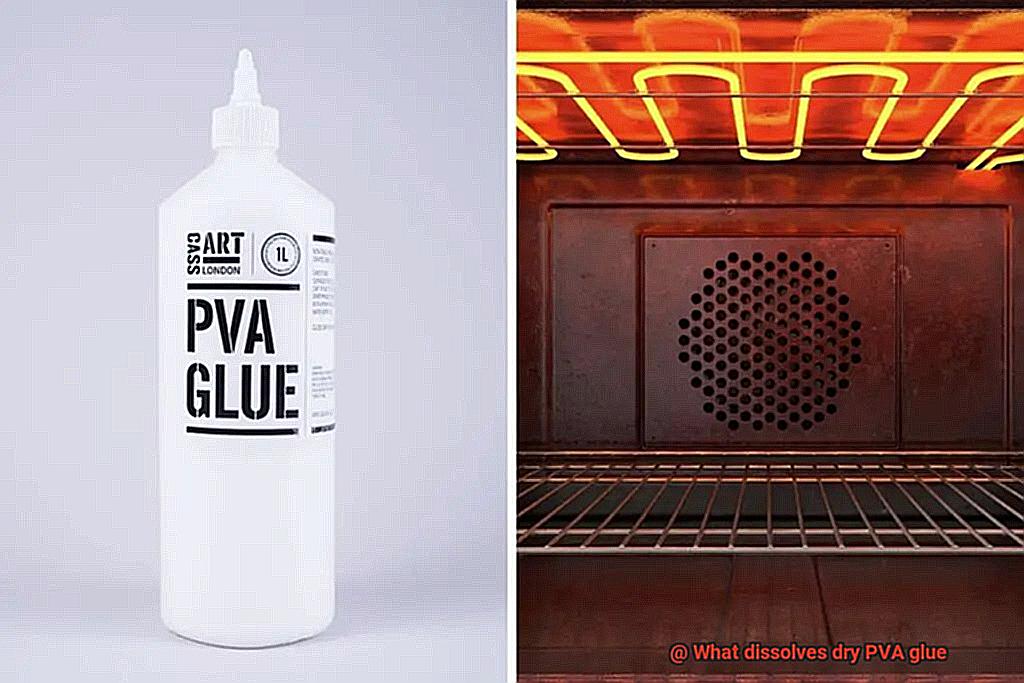
One of the most significant advantages of epoxy glue is its strength and durability. It can withstand immense pressure and stress without losing its adhesive properties or breaking down. It is for this reason that epoxy glue is commonly found in high-stress applications such as aircraft and boat construction.
Despite its many benefits, removing cured epoxy glue can be challenging. However, there are several safe and effective methods to dissolve it. Acetone is a widely used solvent which dissolves the chemical bonds that hold the adhesive together, making it easy to remove. However, it’s crucial to use acetone with care as it can damage some surfaces.
If you’re working with delicate surfaces that may be damaged by acetone, using heat can be an excellent alternative method. You can use a heat gun or hairdryer to soften the adhesive, making it pliable and easy to scrape off with a putty knife or similar tool.
Alongside acetone and heat, other solvents are available for dissolving epoxy glue. Citrus-based solvents like orange oil, alcohol, and vinegar are safe alternatives but should always be tested on a small area first.
Reasons for Removing Epoxy Glue
Epoxy glue is a strong and durable adhesive that can be challenging to remove without proper tools and techniques. Here are five reasons why it’s important to approach the process of removing epoxy glue with care and caution:

Permanent bond
Epoxy glue forms a permanent bond that can make it difficult to remove without causing damage or leaving behind residue. This is especially true if the epoxy has been applied to a surface that was not intended, such as skin or clothing.
Mistakes happen
Errors in application can occur, such as too much glue being applied or the wrong surfaces being glued together. Removing the epoxy and starting over may be necessary to correct the mistake.
Discoloration or damage
Epoxy glue may become discolored or damaged over time, which can weaken its bond. If this occurs, it’s best to remove the old epoxy glue and replace it with a new layer for optimal performance.
Safety concerns
Epoxy glue may need to be removed from surfaces due to safety concerns, such as if it’s applied to a food-grade surface, or near sensitive equipment. In these cases, it must be removed before the surface or equipment can be used safely again.
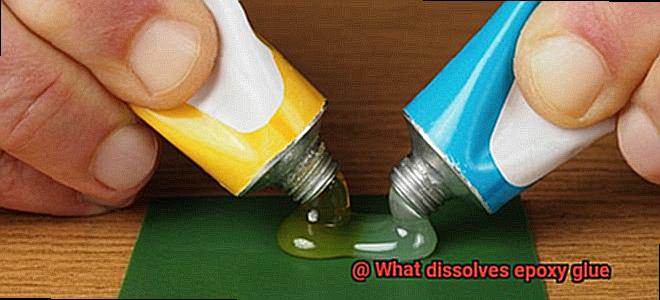
Residue
Improper removal of epoxy glue can leave behind residue that can be challenging to clean up. This can make future projects more difficult and time-consuming, as well as compromise the integrity of the surface or structure.
Acetone as a Solvent for Removing Epoxy Glue
If you’ve ever had to remove epoxy glue, you may have heard of using acetone as a solvent. But is it really effective and safe? As an expert in this field, I’m here to provide you with all the details.
Let’s start with safety. Acetone is highly flammable and can be toxic if ingested or inhaled. Therefore, it’s essential to use it with caution and care. Wear protective gloves, work in a well-ventilated area, and keep acetone away from heat sources and open flames. These precautions will ensure that you can safely use acetone as a solvent for removing epoxy glue.
Now, let’s get to the effectiveness of acetone. This colorless liquid has a distinct odor and is readily available in hardware stores at an affordable price. It has the power to dissolve many compounds, including epoxy glue. To use it as a solvent, apply a small amount onto the affected area and let it sit for several minutes. The acetone will begin to dissolve the epoxy glue, making it easier to wipe away with a cloth or scraper.
However, not all types of epoxy glues are created equal – some formulations may require a stronger solvent or mechanical means of removal. Additionally, acetone may damage certain surfaces, so always test it on an inconspicuous area first before using it on the entire surface.
In summary, acetone can be an effective solvent for removing epoxy glue when used properly. Wear protective gear, work in a well-ventilated area, and test it out first before applying it everywhere. If you follow these guidelines, you’ll be able to safely and efficiently remove epoxy glue with acetone.
Using Heat to Soften and Remove Epoxy Glue
There are many methods out there, but using heat to soften and remove epoxy glue is one of the most popular in industrial settings. Why? Because heat can break down the chemical bonds in the adhesive, making it easier to remove.
Let’s dive into the different methods you can try. The most common way is to use a heat gun, a tool that blows hot air onto the surface of the glue. As the glue softens up, you can scrape it away with a putty knife or other scraping tool. However, be careful not to overheat the surface underneath, or you’ll risk damaging it. Safety is crucial when using a heat gun, so wear protective gear like gloves and eye protection.
Another method you can try is boiling water. Pouring boiling water onto the glue will also cause it to soften up, but this technique is better suited for smaller areas or items that can’t handle high heat. A hair dryer or other heating tool may also work, but keep in mind that these methods may require more time and effort to achieve the desired results.
Before you start any of these methods, safety should always come first. Work in a well-ventilated area and test your chosen method on an inconspicuous area first. Remember to wear protective gear to avoid burns or other injuries.
In summary, using heat to soften and remove epoxy glue can be an effective method if done correctly. Here’s a quick checklist for success:
- Use a heat gun or boiling water
- Be cautious not to overheat the surface underneath
- Wear protective gear
- Test on an inconspicuous area first
Other Solvents That Can Dissolve Epoxy Glue
Well, good news. There are a multitude of solvents that can dissolve epoxy glue besides the usual suspects of acetone and alcohol. As an expert in this area, I have compiled a list of solvents that can get the job done.
Let’s start with vinegar, a common household item. The acidic properties of vinegar can break down the chemical bonds of the epoxy glue. Soak a cloth or sponge in vinegar and place it on the affected area for several hours. Afterward, the glue should be softened and easy to remove.
Another option is hot water. It’s as simple as soaking the area in hot water for several minutes and then using a plastic scraper or putty knife to remove the softened glue. This method is perfect if you don’t want to use any harsh chemicals.
If you need something stronger, methyl ethyl ketone (MEK) is a powerful solvent commonly used in industrial settings. Apply a small amount onto the affected area and let it sit for several minutes before using a scraper or putty knife to remove the softened glue.
Lastly, dimethyl sulfoxide (DMSO) can also dissolve epoxy glue effectively. Apply a small amount onto the affected area and let it sit for several minutes before removing the softened glue with a scraper or putty knife.
It’s important to note that these solvents can be hazardous and should be handled with caution. Always wear protective gear like gloves and a mask when working with them. And be sure to follow proper safety guidelines when disposing of leftover solvent.
Safety Precautions When Removing Epoxy Glue
Removing epoxy glue can be a challenging task, but it doesn’t have to be a hazardous one. As an expert in the field, I know that safety precautions are crucial when dealing with this stubborn adhesive. Here are some tips to ensure that you can safely remove epoxy glue without putting yourself or others at risk:
First, it is essential to work in a well-ventilated area. Epoxy glue releases fumes that can cause irritation to your eyes, nose, and throat. Therefore, it is crucial to work in an area with proper ventilation to avoid inhaling these harmful fumes. Additionally, always wear protective gear such as gloves and goggles to prevent skin and eye contact with the glue.
Before starting the removal process, make sure to read the instructions on the label of the solvent you are using to dissolve the epoxy glue. Different solvents have varying levels of toxicity, and it is critical to use them according to their intended purpose. Moreover, keep the solvents away from any open flames or heat sources as they can be flammable.
When applying the solvent, use a small amount at a time and avoid splashing it onto other surfaces or objects. If you accidentally spill some of the solvent, clean it up immediately with a clean cloth or paper towel. It is vital not to use water to clean up a solvent spill as it can spread and cause further damage.
Finally, dispose of any leftover solvent and rags properly. Some solvents can be hazardous waste and should be disposed of at designated disposal sites. Do not throw away solvent-soaked rags in the trash as they can be flammable and pose a fire hazard.
Testing the Solvent on a Small Area First
You don’t want to end up with a bigger problem than you started with, and trust me, accidentally dissolving your kitchen countertop is not a fun experience.
Different solvents can have vastly different effects on the surface underneath the glue, which is why it’s essential to test the solvent first. Some solvents may cause discoloration or damage to the surface, while others may even dissolve the material itself. This can lead to costly repairs and headaches.
To avoid any disasters, start by selecting a small and inconspicuous area of the surface to apply the solvent. Apply a small amount of the solvent to a clean cloth and gently rub it onto the glue. Keep a close eye out for any changes in color, texture, or consistency of both the surface and the glue.
If everything looks good, proceed with applying more of the solvent to the glue. However, if you notice any adverse effects on the surface, stop immediately and try a different solvent or seek professional help. Taking this precautionary measure can save you from making costly mistakes and ensure that you achieve the desired outcome.
It’s also important to wear protective gloves and eyewear when handling solvents as they can be harmful to skin and eyes. Adequate ventilation should also be ensured when using solvents indoors. These chemicals can pose serious health risks if not handled properly.
Advantages of Using Solvents to Remove Epoxy Glue
If you’ve ever dealt with epoxy glue, you know how tough it can be to remove once it has dried and cured. Luckily, using solvents to remove epoxy glue can make the process much easier and more effective. Let’s take a closer look at the advantages of using solvents for this task.
Advantage #1: Safe for Delicate Surfaces
One of the biggest advantages of using solvents to remove epoxy glue is that they are effective without causing any damage to the surface underneath. This is especially important when working with delicate or expensive materials such as wood, metal, or plastic. Unlike other removal methods that can potentially harm your project, solvents can dissolve the epoxy glue without causing any harm to the underlying surface. This means you can safely remove the glue without worrying about ruining your work.
Advantage #2: Easy to Use
Another great advantage of using solvents to remove epoxy glue is that they are incredibly easy to use. You don’t need specialized tools or a lot of elbow grease to get the job done. Simply apply the solvent onto the area where the epoxy glue needs to be removed and wait for it to work its magic. Once the glue has been dissolved, it can be easily wiped away. It’s as simple as that. This makes removing epoxy glue a quick and hassle-free task.
Advantage #3: Affordable
Using solvents to remove epoxy glue is an affordable solution. Solvents are readily available at most hardware stores or online retailers and come in various types depending on your project needs. You won’t have to spend a lot of money on expensive removal methods or tools. With a little bit of research, you can find an affordable solvent that will do the job just as well.
v6LuNGv4IKo” >
Conclusion
In conclusion, tackling a stubborn epoxy glue can be a daunting task, but fret not. Armed with the right tools and techniques, you can effortlessly dissolve this adhesive from any surface. Acetone is a popular solvent that effectively breaks down the chemical bonds in epoxy glue, making it an excellent option for removal. However, vinegar, hot water, MEK, and DMSO are equally potent alternatives that work wonders.
While working with solvents, safety should always take precedence. Donning protective gear such as gloves and goggles is crucial when handling these chemicals. It’s also essential to test the solvent on an inconspicuous area first to avoid damaging the underlying surface.
The benefits of using solvents to remove epoxy glue are numerous – they are safe for delicate surfaces, easy to use and affordable. By following these tips and precautions, you can become an expert in removing epoxy glue without compromising your safety or the integrity of your project.

